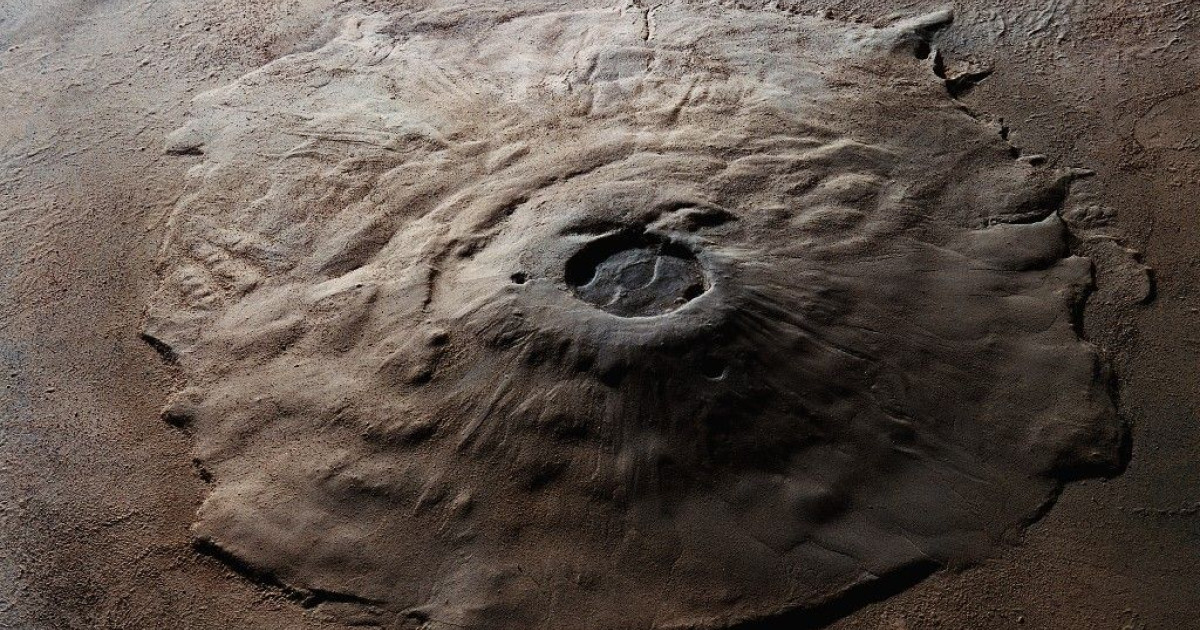
Mount Olympus on Mars is the highest mountain — or, to be exact, a dormant volcano — ever discovered in the solar system — and as many like comparisons, it’s seven times higher than Mount Olympus in Greece.
Mars exploration has always been a big chapter for the scientific community. Both for its “blue” past (as much of its surface was covered by oceans), and for its “calm” present. But above all, for its future, as many argue it could be (or) the place of residence of man in the future.
In the course of continuous exploration, astronomers until 1972 saw a strong reflection of light on the surface of Mars. It was the “snow of Olympus,” as they called it. They suspected there might be a mountain there – on the volcanic plane of Tharsis, in the Western Hemisphere – but they couldn’t confirm it.
Space missions that followed in the following decades had already shown that it was a mountain – and huge for that time!
Mount Olympus is the highest mountain ever discovered in our solar system. MOLA (Mars Orbiting Laser Altimeter), one of five instruments in the wider MGS system (a spacecraft that entered Mars orbit in November 1996) has estimated that the altitude of Olympus is close to 21.9 kilometers.
In fact, Olympus is an inactive volcano, its width is 550 kilometers, which means that if we put it on the ground, it would take up as much space on the map as the whole of Poland.
As for Mount Everest (8.8 km), now the highest mountain on earth, Olympus has a height nearly three times higher, and around it there are cliffs and craters, which are also the object of study. In fact, the land around it was subjected to a two-kilometer-deep subsidence.
Why did Olympus become so big?
The presence of a hot spot that transports lava to the surface is a major factor in the size of Mt. This phenomenon exists not only on Mars, but also on Earth, where the Hawaiian Islands have similar, albeit smaller, volcanoes.
However, the Pacific tectonic plate is constantly moving over the hotspot, while there are no tectonic plates on Mars. This results in the lava that continues to flow in the same place creating thick layers that “raise” the mountain. And Mars, with its significantly lower gravity compared to Earth, allowed Olympus to “rise” before it collapsed under the weight of its own weight.
Before we later got to the numbers describing its size, the spacecraft that found Olympus to be much larger than any other term on Earth was Mariner 9, in 1972. Its images helped us better understand its size, while British astronomer Patrick Moore was He has indicated earlier that during dust storms that “obscured” the planet’s surface, Olympus remained visible.
He quoted the discovery of the Italian astronomer Giovanni Schiaparelli (known for his studies on Mars), that because of the aforementioned phenomenon, Olympus must have been very high. And finally – it was confirmed.
and “Myth” about Olympus
For many years, the opinion prevailed — wrongly — that Mount Olympus rises above the edges of the Martian atmosphere And basically… it dissolves into space. But there is no truth in this.
the above unavailable over the atmosphere of Mars. The atmospheric pressure at the summit is between 5% and 8% of the planet’s average atmospheric pressure. In contrast, at the summit of Mount Everest on Earth, you will feel 32% more atmospheric pressure than the atmospheric pressure measured at zero altitude.
However, it must be emphasized that Mars, which has less gravity, somehow allows the atmosphere to expand to a greater height compared to that of Earth.
In any case, the summit of Olympus is beyond it.
Follow Reader.gr at google news To always be up to date with all the news from Greece and the world.

“Total alcohol fanatic. Coffee junkie. Amateur twitter evangelist. Wannabe zombie enthusiast.”





More Stories
Is this what the PS5 Pro will look like? (Image)
Finally, Windows 11 24H2 update significantly boosts AMD Ryzen – Windows 11 performance
Heart Surgeon Reveals The 4 Things He ‘Totally Avoids’ In His Life